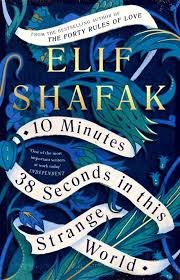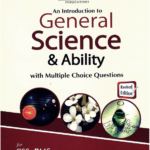Description
Published in 2014, Anthony Doerr’s historical novel, “All the Light We Cannot See”, won the Pulitzer Prize for Fiction in 2015 and is now famous for using poetic and intricate narrative structures in the presentation of human aspects of World War II. The novel retells the story of a blind French girl and a German boy whose lives are intertwined as they cross paths in war-torn Saint-Malo, France, weaving their fates into an epic tale of love, loss, and survival in this masterpiece.
Overview:
1. Plot Summary:
Marie-Laure LeBlanc: Marie-Laure is a blind French girl who lives in Paris with her father, the master locksmith at the Museum of Natural History. Her father explains the world by way of various models that she can touch that represent the space and shows her independence. When the Nazis occupy Paris, Marie-Laure and her father flee to the coastal town of Saint-Malo, where they seek refuge with her great-uncle Etienne, a reclusive World War I veteran. Perhaps without her knowledge, her father possesses a priceless and deadly entity from the museum-the fabled Sea of Flames, a diamond that brings bad luck to the owner.
Werner Pfennig: Werner is a German orphan with a great talent for constructing and restoring radios. Living in a mining town, he harbors huge ambitions of escaping his desolate future to become a scientist. When Werner’s talents within the operational sphere of radio transmissions are spotted by Nazi officials, he’s conscripted into an extremely unforgivingly brutal Nazi military school. Eventually, Werner is assigned missions to track down anti-Nazi radio broadcasts, missions that take him to Saint-Malo, where Marie-Laure is hiding.
As World War II escalates, Marie-Laure becomes part of the French Resistance, taking to broadcasting messages on a mysterious radio transmitter hidden in her uncle’s house. Werner’s mission to find and eliminate these illicit broadcasts is further complicated by his growing disillusionment with his role in the Nazi war machine. Their story concludes in the last days of war, as the Allied forces prepare for their final assault on Saint-Malo and set the stage for their fateful encounter.
Innocence and War: Marie-Laure as well as Werner are young, full of dreams, and innocent before the war. The novel explores how the war shatters their childhoods and catapults them into brutality, loss, and moral issues much broader than themselves. Of these, Werner is particularly conflicted between his own basic goodness and the evil to which he is compelled to commit himself.
The Power of Knowledge and Science: The science shown in the novel is very important and specifically radio technology. The Nazis used the radios for evil, as they could track down their enemies; however, through it, people like Marie-Laure were also enabled to spread messages of hope. So the novel affirms the pursuit of knowledge that can link a people even at the darkest of times.
Vision and Perception: Blindness is the main role of Marie-Laure in the novel, and the theme of perception-literally and metaphorically-folds throughout. Though she can’t see, Marie-Laure perceives the world through other senses, with all beauty and braveries despite the chaos around her. The author says that there are many kinds of light and ways to see, not all depending on physical sight.
The novel centers on the intersections of fate and free will. It brings out the characters’ lives as deeply shaped by the forces of history but also brings out their choices within this setting. Werner, in particular, feels torn between doing his duty and morality as he asks himself whether, in a world ruled by violence, he has control over his fate or not.
3. Character Development:
Marie-Laure LeBlanc: Marie-Laure bestows upon the reader the strong individual of resilience and hope even when faced with unimaginable adversity. She never loses her curiosity and wonder about the world despite her blindness and the horrors of war. Her will to survive, as well as her resolve to fight back against the Nazis in a small way, does create a very compelling and inspiring character.
Werner Pfenning: Characterized by self-struggle, Werner’s main person is incredibly typical of an young boy: curiosity and dreams about escaping the poverty of a mining town with his head. His talent for radios is exploited by the Nazis and becomes part of a system he increasingly despises. Werner’s story is a tragic exploration of how good people can be caught up in evil systems.
Symbolism: Etienne LeBlanc Marie-Laure’s great-uncle, Etienne is a reclusive and traumatized veteran who avoids the war at first. It is through Marie-Laure that he gets integrated into the resistance, broadcasting messages that help the French cause. From isolation to active resistance, this is one of the most important arcs in the novel.
4. Symbolism:
The diamond, which Marie-Laure’s father hides, is the central symbol of the novel. Forging eternal life in its possessor but bad luck around it, this diamond captures power allure and all its moral ambiguities. The gem also symbolizes a choice that characters face; whether to protect what is precious to them or do what is right.
Radios and Communication: Radios in the novel had been used as a literal as well as symbolic way of connecting and bridging miles of physical distance. They represented the power of communication to bring hope and offer resistance against the forces of oppression. In Werner’s case, his talent for radios was being both opened up to him and presented a moral dilemma. Marie-Laure used radio broadcasts to fight against the Nazis and connect with others.
Actually, even the very title of the book, “All the Light We Cannot See”, reflects the central tension inherent in the unseen-whether these are radio waves that carry messages around Europe or the inner lives and choices that characterize its characters. It seems to indicate that there exist so many forms of light, some of which we cannot perceive with our material eyes but which light up our lives even so.
5. Historical Context:
The book revolves around World War II, more particularly about the Nazi’s occupation of France and the last days of the war. Saint-Malo, where much of the book takes place, was subjected to intense bombing by Allied forces in 1944. Depicting life during the Nazi occupation, and the horrors and resilience of the war, Doerr’s painting of this period is vivid but often heartbreaking.
6. Style and Structure:
Lyrical Prose: Doerr’s writing at times is poetic, full of deep descriptions into the nature of earth, and psychological insight into his characters’ minds. He balances the horrors of war with moments of beauty, thus rendering a ‘heart-breaking-uplifting’ story.
Non-linear Narrative: The book jumps back and forth in time, as suspense builds up jumping between the lives of Marie-Laure and Werner before, during, and after the war. It lends readers an understanding of how, concurrently, the trajectories of the two characters interlink.
Conclusion:
“All the Light We Cannot See” is a hauntingly beautiful novel about the human spirit: a spectacular work into unimaginable endurance. With its richly developed characters, symbolic light and vision, and its own moral complexity study, Anthony Doerr painstakingly paints poignant aspects of life during war. The eternal themes of hope, love, and unseen forces linking and bringing humankind together create a vessel for readers to sink deeper into this historical fictional masterpiece.










Reviews
There are no reviews yet.